‘Really diabolical’: inside the coronavirus that outsmarted science
In a deadly march, it hitchhiked over continents on coughs, careless hands, an embrace: how the virus outsmarted science.

The new coronavirus is a killer with a crowbar, breaking and entering human cells with impunity. It hitchhikes across continents carried on coughs and careless hands, driven by its own urgent necessity to survive.
It has a gregarious side that makes it hard to resist. It loves a party. The persistent social climber claims its victims around the world by riding on moments of the most innocent of human interactions — a shared laugh, a conversation, an embrace.
And it is a liar. SARS-CoV-2, which causes COVID-19, often misleads the body’s immune systems.
Taken on its own terms, SARS-CoV-2 is the infectious disease success of the past 100 years.
Almost unmatched in the annals of emerging human contagions, it has parlayed a few chance infections into a pandemic of around 27 million confirmed cases so far.
‘We underestimated it’
Doctors long expected the advent of such a virus, but even so, the shrewdness of the coronavirus caught many by surprise, and goes a long way to explaining how the world has struggled to contain it ever since.
“We underestimated it,” said Peter Piot, the head of the London School of Hygiene & Tropical Medicine and a co-discoverer of Ebola, who fell victim to the coronavirus himself in March.
Modern travel made it easy for the new coronavirus to spread to frequent flyers. It slipped unnoticed aboard a cruise ship in Japan and into Zumba classes in South Korea. It infected mourners at a funeral in suburban New York, a choir in Skagit County, Wash., and students on spring break in Florida.

Initially, it was widely believed the virus made its home in bats, which harbour hundreds of different kinds of coronaviruses. But it ventured into new species.
In Hong Kong, Yuen Kwok-yung had been waiting more than a decade for a virus like this to surface.
The 63-year-old infectious diseases professor at the University of Hong Kong became enthralled with bat coronaviruses since making the connection between bats and the original SARS outbreak in 2003, which was caused by a related coronavirus. He amassed a database of animal surveillance, showing that 39% of Chinese horseshoe bats could be harbouring SARS-related coronaviruses.
The ‘time bomb’
In 2007, he wrote in Clinical Microbiology Reviews that those findings represented “a time bomb.” Bats’ cells can survive surges in metabolism — their hearts can go from 10 beats a minute during hibernation to 1,000 beats in flight. It is thought their constitution makes them ideally suited to be a reservoir where a virus can stay, biding its time before jumping to another host species, an event known as a spillover.
At the end of December, Dr. Yuen, who has been known to show off his photo collection of bats in caves, was beginning to suspect his fears were realised after hearing about a mystery pneumonia afflicting patients around 600 miles away in Wuhan. He warned Hong Kong officials that something was coming, helping spur the city’s response.
After Chinese officials posted the gene sequence of the new coronavirus to share with scientists around the world on Jan. 12, he and others grew increasingly sure where the killer came from. It was so similar to known bat SARS-related coronaviruses, it must have once been one of them, Dr. Yuen said.
Even with spillover, a virus that jumps to a new species doesn’t always spread. Some, like avian flu, an influenza originally in birds that can infect humans, largely stop with the new host and don’t move from human to human.
But around the same time at the HKU-Shenzhen hospital, where Dr. Yuen also heads the microbiology and infectious-disease department, six family members had returned to the southern Chinese city after a visit to Wuhan. They began to feel unwell. The virus had got to them, from the oldest family member, who eventually died, to a 10-year-old boy.
The cluster suggested the virus had a dangerous trait, Dr. Yuen said: It was spreading between humans.
He shared his findings with experts from the Chinese Center for Disease Control and Prevention, adding to a growing body of evidence that led China to confirm to the world that the virus was leaping from person to person.
Even in those early days, said Dr. Yuen, “I suspected that this virus may spread widely throughout the world like the 1918 Spanish flu.”
A borrowed life
All told, there are more viruses than stars in the known universe. Trillions upon trillions of viruses float in the air and ride on the clouds. Scientists at the University of British Columbia estimate that 800 million viruses rain onto every square metre of the planet every day. A coronavirus itself is so small that 500 of them could fit within the diameter of a human hair.
Many scientists can’t decide whether a virus is actually alive in any conventional sense. All viruses lead a kind of borrowed life, chemists say. They are a submicroscopic essence of the need to reproduce that by nature is at cross-purposes with humankind.
“Viruses don’t think. They don’t have desires,” said Columbia University virologist Angela Rasmussen.
In the absence of desire, they have purpose: to spread, multiply and survive. At least 320,000 different viruses infect mammals. There are 219 virus species that are known to be able to infect humans. One researcher found more than a hundred different viruses living inside human lungs. At least six other types of coronavirus are known to infect humans. Several cause the common cold.

SARS-CoV-2 isn’t the first virus to have its impact broadened by travel. Smallpox, which killed 300 million people or more in the 20th century alone, first traversed the world by sailing with the Vikings a thousand years ago, new research into the history of epidemics suggests.
The coronavirus belongs to a category of viruses that work by transmitting chemical code, called RNA, sealed inside a protective protein envelope. RNA is a nucleic acid present in all living cells that usually acts as a messenger to relay genetic instructions in DNA, telling the cells what to do. Once the virus gets inside a host cell, it seizes the cell’s reproductive machinery.
Without that manoeuvre, the coronavirus is impotent. It could never reproduce and churn out the millions of new coronavirus cells in a spreading infection. When it kills, it is almost out of carelessness. Its own survival depends on sparing its victims to continue as vehicles for its propagation.
Death march of the virus
While estimates vary widely, SARS-CoV-2 appears to kill about 0.6% of the people it infects — about six times that of a typical flu. By comparison, two other human coronaviruses are far more lethal but harder to contract. SARS-CoV, the original SARS in the 2003 outbreak, has a case fatality rate of 9.6%, while MERS, which stands for Middle East respiratory syndrome, which was first reported in 2012, has an even higher case fatality rate of 34%.
But the current coronavirus causes serious symptoms in many of its victims. As David Hui, a respiratory disease expert at the Chinese University of Hong Kong, said, it is “mild, until it decides to become nasty.” He said the effects were severe in approximately 20% of the people it afflicts.
Investigators quickly realised that SARS-CoV-2 usually seeks out type II lung cells in the people it hijacks. These coat membranes lining the nose, throat and sinuses, and deep into the lungs. The coronavirus pries the cells open with a molecular structure called a spike protein that it uses like a crowbar to force entry.
In images that scientists made to study it, the round virus bristles with spikes. The spike protein locks onto a receptor called the angiotensin-converting enzyme 2, or ACE-2, which typically regulates a protein that increases blood pressure and inflammation. The receptors seem to be more numerous among older people and higher generally among men than women.
Researchers at the Francis Crick Institute in London used a technique called cryo-electron microscopy to compare this structure to the spike protein of a bat coronavirus most like that of SARS-CoV-2. They saw subtle differences in the spike of SARS-CoV-2 that make it able to bind about 1,000 times more tightly to a human cell than the bat virus, the scientists said.
Once inside a human cell, the new coronavirus has a rare ability to silence alarms that would normally alert the immune system to mobilise antibodies and virus-killing cells, according to microbiologists at the Icahn School of Medicine at Mount Sinai, New York. To do so, it makes special proteins that interfere with the cell’s surveillance system, scientists at the University of Minnesota reported in May.
Bewildering complications
Doctors who first encountered it diagnosed it as a respiratory virus. They looked for symptoms of fever, cough and shortness of breath. But COVID-19 triggered bewildering complications.
People complained of nausea or diarrhoea. Some had arrhythmias or even heart attacks. Some suffered kidney damage or liver failure. Some lost their sense of smell or taste. Other patients turned up at clinics with blood clots or swollen purple bumps on their toes.
In most countries where the virus triggered outbreaks, it sent people to the hospital with delirium, blackouts, brain inflammation or strokes, researchers at the U.K.’s Liverpool University reported in The Lancet Neurology in July.
In a separate review, researchers at Columbia University Vagelos College of Physicians and Surgeons found that up to a third of those infected had neurological symptoms.
By coming into contact with this virus, “you wouldn’t know what kind of effect a meeting with it would have: Maybe you will be unscathed, but maybe you would die,” said the University of Oxford’s Sarah Gilbert, whose team is developing a vaccine against the virus that is in late-stage human trials.
Heidi Larson first met the virus when her husband started feeling lethargic and feverish. He lost his appetite and struggled to lift a spoon. When she touched his forehead, it burned. “But fever can mean many things,” she said.

Prof. Larson, an anthropologist specialising in vaccines, had spent years working around the world and has survived typhoid in Nepal and eosinophilic meningitis in Fiji. Her husband is 71-year-old Dr. Piot, the virus hunter who co-discovered Ebola. He was the first to run the United Nations agency to combat AIDS, the condition caused by HIV, before going on to head the London School, the research university focused on public health and tropical medicine.
With no signs of Dr. Piot’s fever subsiding over the course of a week, their suspicions began to sink in. A test confirmed: The man who had spent his life combating viruses was now besieged by one.
By the 14th day, his fever spiking, they rushed to the emergency room and he was immediately admitted. He had no breathing difficulties but his oxygen saturation levels were dangerously low, a condition called silent hypoxia.
“It got me … the virus got me’
In his more lucid moments, he kept thinking: “It got me. The virus got me.” Dr. Piot was relieved when he was discharged. But then came a second wave: He got chills and a form of pneumonia. He thinks his body was hit by a so-called cytokine storm, a side effect for many victims in which the body’s immune system goes into overdrive and attacks more than just the invader.
Prof. Larson tested positive for antibodies, suggesting she was also a victim, but her symptoms were different, too: conjunctivitis and splitting headaches.
Five months on, Dr. Piot is recovering, though he still experiences lingering effects. They both are concerned about long-term consequences yet to be revealed.
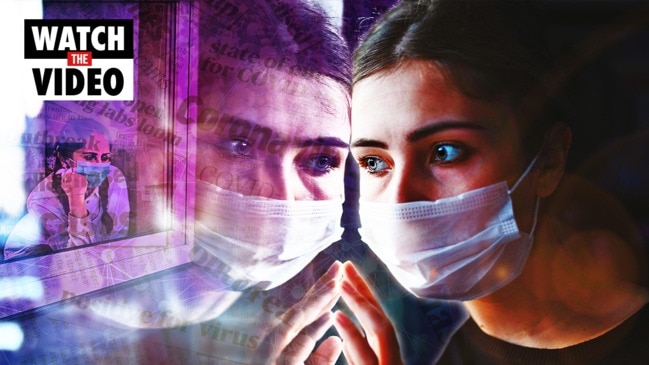
“This virus is really diabolical, it came like a thief in the night with an insatiable appetite for victims to devour,” Dr. Piot said. “It behaves unlike any other virus. It spreads through our respiratory system because there are receptors in our noses and throats — but then it goes through your entire body: blood vessels, the heart, every organ could be targeted. It’s crazy.” The virus has infected millions of people who never got sick or were only mildly ill, which allowed it to reproduce while its victims spread it in ever-widening circles.
By contrast, those who become infected with the Ebola virus don’t become infectious until they actually show symptoms and usually are too sick to travel.
When researchers at the University of California, San Francisco tested people for SARS-CoV-2 in San Francisco’s Mission District, 53% of those infected hadn’t shown any overt ill effects.
Children enter the equation
In the early days of the pandemic, researchers thought children might be less affected by the coronavirus, with lower rates of hospitalisation and few deaths. But the very young are more vulnerable than initially suspected.
By the end of July, nearly 340,000 children in the U.S. had tested positive for COVID-19, or 8.8% of all reported cases. No one is sure yet how readily children transmit the virus or whether they are highly contagious when they show no symptoms.
The virus’s own internal chemistry alone wasn’t enough to account for so much variation of symptoms, severity and deaths.
Forensics team There is no shortage of possible contributing causes: old age, gender, underlying chronic diseases such as diabetes, lack of health care and poor diet. Investigators also turned their attention to gene variations that might make some uniquely vulnerable.
“The immune system in people is as diverse as beauty, height, intelligence and any other human feature,” said molecular immunologist Michel Nussenzweig at Rockefeller University in New York. “Not everybody is the same in their ability to fight infection.” At Rockefeller and the New York Genome Center, scientists are comparing the entire genomes of those most severely affected by the coronavirus to those who experience only mild symptoms — and then to the coronavirus itself. They are part of a network in 50 countries that is studying the new disease by analysing the DNA from millions of people.
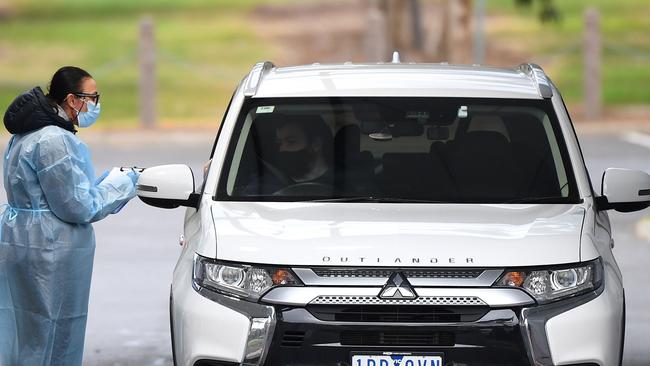
Like a crime scene forensics team, these scientists extract the virus from nose swab mucus collected from the people it infected and, through high-speed genome sequencers, reduce it to biochemical code for analysis. Some samples are drawn from people who suffered no more than a fever and a cough. Others come from autopsies.
At this level of molecular biology, the virus and its victim are one, their genetic material intermingled in a tiny vial awaiting processing.
Wearing a blue mask, purple gloves and a blue lab coat, Melissa Marton, the associate director of the New York Genome Center’s research sequencing lab, opened a biosafety box with a razor and gingerly removed a rack holding 94 tubes of virus samples. Each one was labelled with an identifying bar code.
A robot sorted them behind a plexiglass barrier inside a biosafety hood with a specialised ventilation system. The possibility for the virus to break out at this point in processing is small but not zero. “That’s why we take extra precautions,” she said.
Virus evolving
Every few days, shipments of RNA from the virus and DNA from the patients it infected arrived at the centre in Manhattan’s SoHo district from regional hospitals. The genome consortium so far has collected 1600 samples for sequencing.
They can already tell the virus is evolving.
The four bases of virus RNA are written in an alphabet composed of nucleotide chemicals: adenine (A), cytosine (C), guanine (G) and uracil (U). In its rush to make new copies of itself, the virus is prone to random errors.

“The virus changes on a fairly clockwork basis,” said computational biologist Michael Zody at the genome centre. “Every two weeks or so, it seems that the virus picks up a new mutation.” That adds up to about 25 random changes a year, much less than the seasonal flu, which has a mutation rate of almost 50 mutations a year. Most of the changes in the coronavirus don’t make any difference now.
In time, it is possible that some might make it easier to transmit from person to person or become deadlier. So far, more than 1,200 natural variations in coronavirus strains around the world have been identified.
Recently, researchers led by biologist Bette Korber at Los Alamos National Laboratory in New Mexico identified a single change in the 30,000 chemical characters of the coronavirus RNA. In a section of code that affects its spike protein, a single “A” had turned to “G,” the scientists said.
That version has become more common in almost every country, compared with the original version that first arose in Wuhan. It may have out-competed the original strain, but may not be making patients any sicker, the scientists said.
“Any of these mutations could functionally make the virus different,” said Emma Hodcroft at the University of Basel in Switzerland who tracks its global transmission. “But this virus is very young and we haven’t seen any evidence of this happening yet. It’s only been in humans a few months, and it’s doing very well.”
The Wall Street Journal
More Coverage
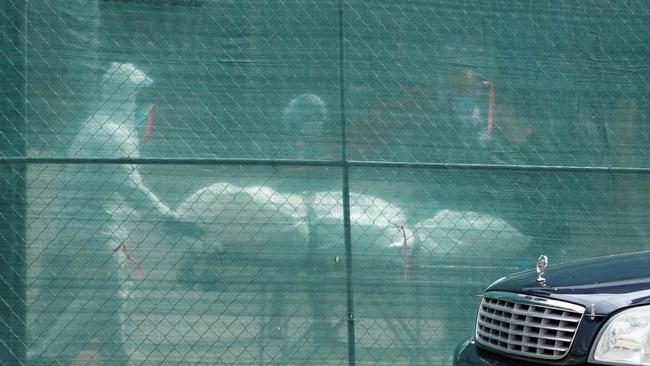

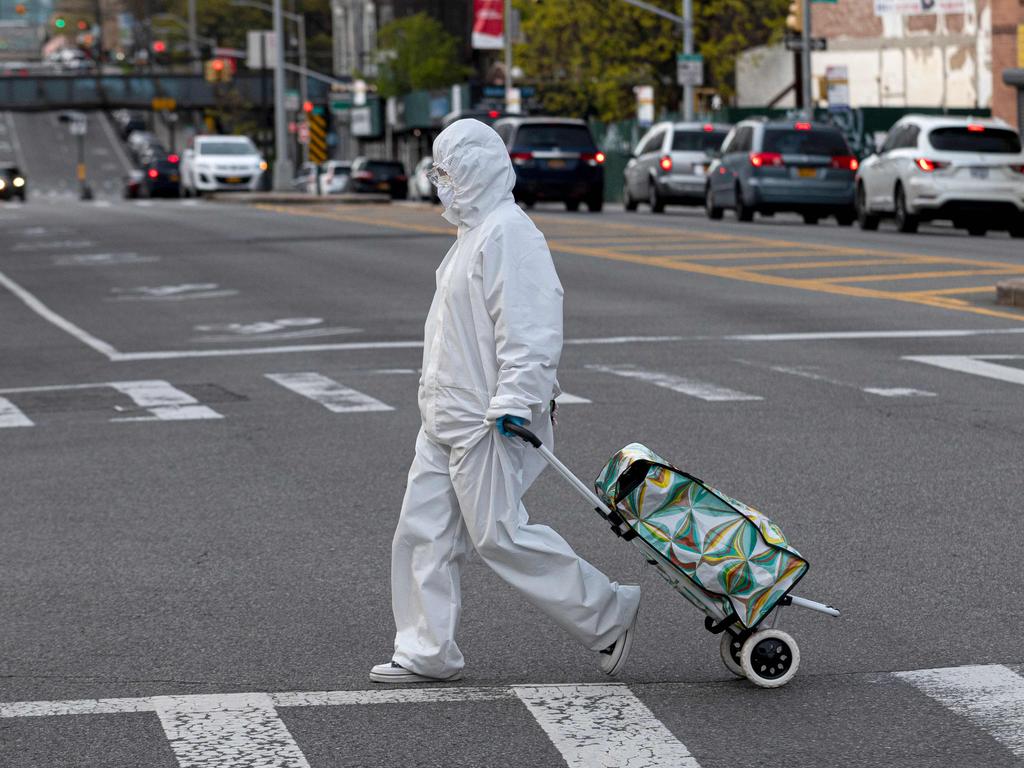

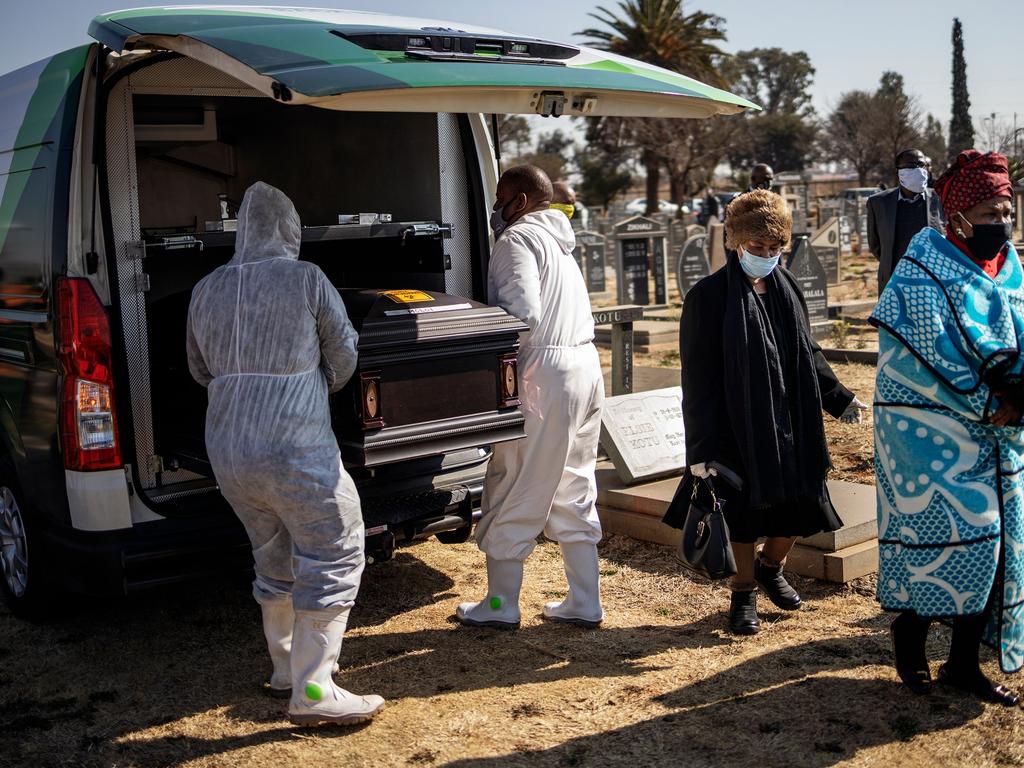

To join the conversation, please log in. Don't have an account? Register
Join the conversation, you are commenting as Logout